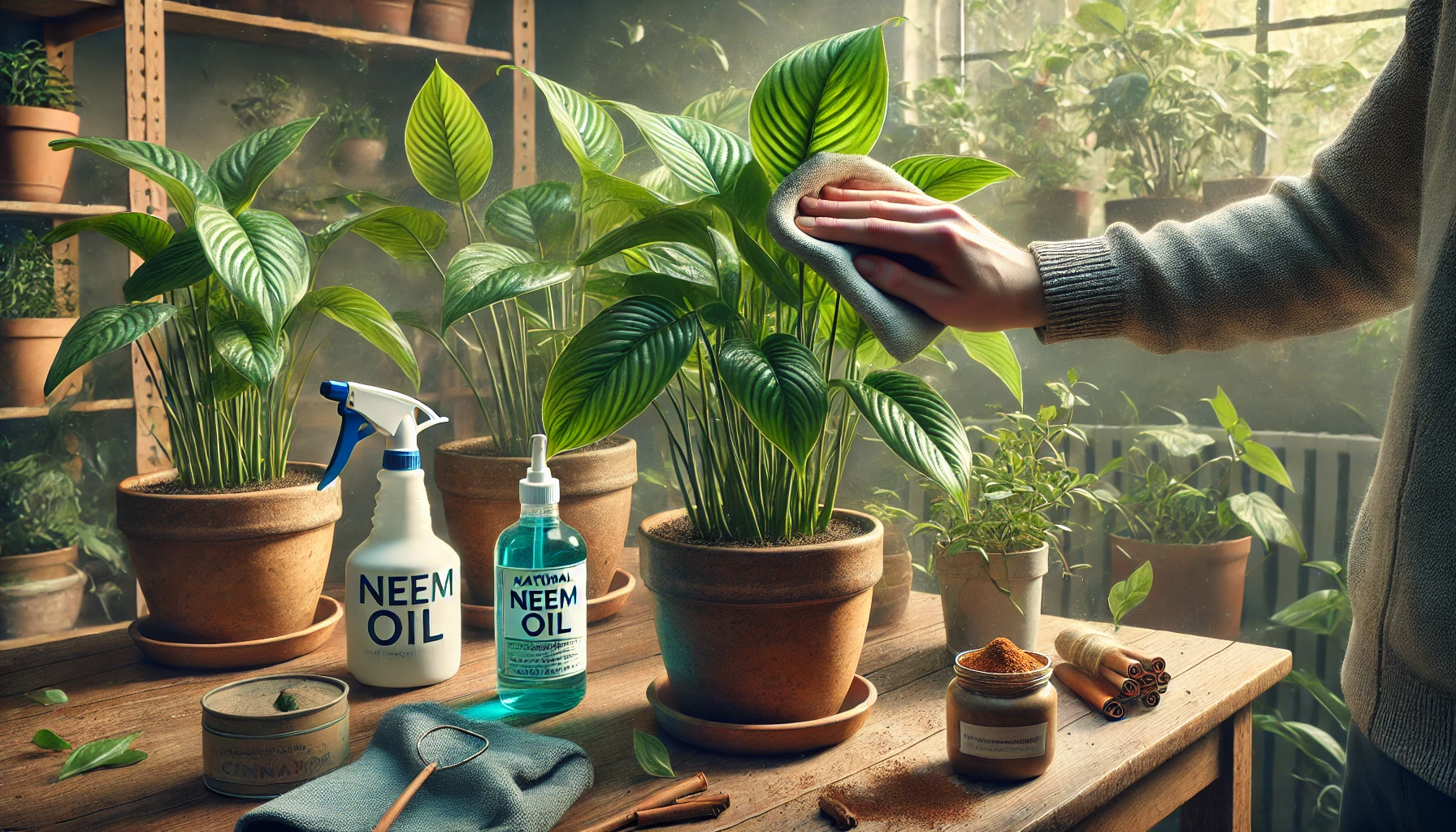Few things are more frustrating for a plant lover than discovering bugs crawling across your favorite monstera or webbing between the leaves of your spider plant. Indoor plants may be safe from outdoor weather, but they’re not immune to pests — especially if conditions are just right for these tiny invaders to thrive.
The good news? With the right habits and a bit of routine attention, you can prevent most pest problems before they start. This article will teach you how to keep your houseplants pest-free, naturally and consistently.
Why Pests Love Indoor Plants
Your home offers the perfect environment for many plant pests:
- Stable temperatures
- Lack of natural predators
- High humidity or stagnant air
- Overwatered soil (hello, fungus gnats!)
Pests can come from:
- New plants you bring home
- Contaminated soil or pots
- Open windows
- Even your clothes or pets
That’s why prevention is your best defense.
Common Indoor Plant Pests to Watch For
Before jumping into prevention, here are the usual suspects:
| Pest | What to Look For | Where They Hide |
|---|---|---|
| Spider mites | Fine webbing, speckled leaves | Leaf undersides |
| Mealybugs | White, cottony clusters | Leaf joints, stems |
| Aphids | Tiny green/yellow/black bugs | New growth, stems |
| Fungus gnats | Tiny flying bugs near soil | Damp soil |
| Scale insects | Small brown bumps | Stems and undersides |
| Thrips | Silver streaks or dots | Leaf undersides |
Now let’s prevent them before they arrive.
1. Inspect New Plants Before Bringing Them Home
Pests often sneak in on new plants from nurseries, garden centers, or plant swaps.
What to do:
- Check under leaves, stems, and soil for bugs or eggs
- Look for discolored or sticky leaves
- Wipe down leaves with a damp cloth before placing indoors
- Quarantine new plants for 1–2 weeks away from your collection
A short delay can save your entire indoor jungle.
2. Keep Leaves Clean and Dry
Dusty, dirty, or wet leaves create the perfect environment for pests to settle in.
Tips:
- Wipe broad leaves weekly with a soft damp cloth
- Gently rinse small plants in the shower every few weeks
- Avoid misting too often (especially if airflow is poor)
- Let excess water dry off leaves quickly
Clean leaves = stronger photosynthesis and fewer hiding spots for bugs.
3. Avoid Overwatering
Damp soil, especially in low light, becomes a breeding ground for fungus gnats and mold.
What to do:
- Water only when the top 1–2 inches of soil are dry
- Use pots with drainage holes
- Empty saucers after watering
- Add a layer of sand or small pebbles on top of the soil to discourage gnat eggs
Healthy roots need air as much as they need water.
4. Improve Air Circulation
Pests thrive in stagnant, humid air, especially if leaves stay wet for long periods.
Solutions:
- Space your plants out (don’t overcrowd)
- Open windows when weather allows
- Use a small fan near your plant shelf
- Prune overgrown foliage to improve airflow
Air movement keeps humidity balanced and discourages pests from settling in.
5. Fertilize Properly
Over-fertilizing can make your plants more attractive to pests by creating soft, juicy new growth.
Tips:
- Use fertilizer only during the active growing season
- Follow dilution instructions carefully
- Skip winter feedings when growth slows down
Balanced nutrition makes your plant stronger and more resistant to attacks.
6. Use Natural Pest Deterrents
A few household items can help keep pests away without harsh chemicals.
Try these:
- Neem oil spray: Mix with water and a bit of dish soap; apply to leaves every few weeks
- Cinnamon: Sprinkle on soil to reduce fungus and gnats
- Diluted hydrogen peroxide: Helps with gnat infestations (mix 1 part peroxide to 4 parts water)
- Garlic or essential oils: Some scents repel pests — just use cautiously and test first
These gentle solutions help keep the peace in your plant community.
7. Monitor Regularly
Routine observation is the most powerful tool you have.
Check for:
- Sticky residue on leaves (a sign of sap-sucking bugs)
- Discoloration or curling
- Webbing, bumps, or moving dots
- Bugs crawling near soil or stems
Catch pests early, and they’re much easier to manage.
8. Isolate Sick Plants
If you notice one plant with signs of infestation, move it away from the rest immediately.
Steps to take:
- Remove heavily affected leaves
- Rinse or wipe down foliage
- Apply neem oil or insecticidal soap
- Check surrounding plants for signs of spread
A quick response can stop an outbreak in its tracks.
9. Use Clean Tools and Supplies
Contaminated tools, pots, or soil can spread pests or disease.
Best practices:
- Clean scissors and pruners with alcohol before and after use
- Avoid reusing old soil unless sterilized
- Wash hands or gloves between handling different plants
Sanitation keeps your plant collection healthier long term.
Final Thoughts: Prevention Is Peace of Mind
Preventing pests on indoor plants isn’t about perfection — it’s about awareness and consistency. With just a little weekly attention, you’ll catch early signs, stop bugs from spreading, and enjoy a home full of vibrant, pest-free greenery.
Your plants don’t need harsh chemicals or daily surveillance. They just need a clean environment, proper care, and your attention now and then.
A few minutes a week is all it takes to keep your indoor jungle peaceful — and pest-free.
